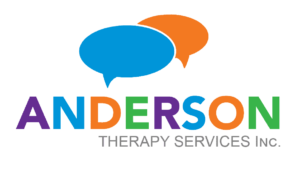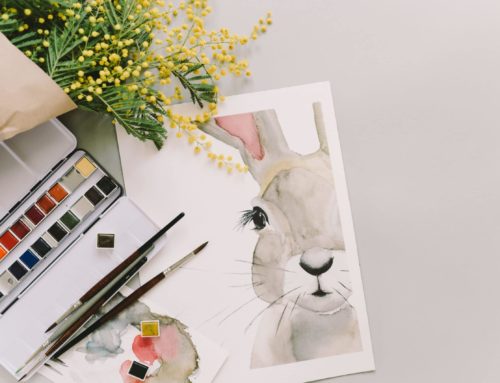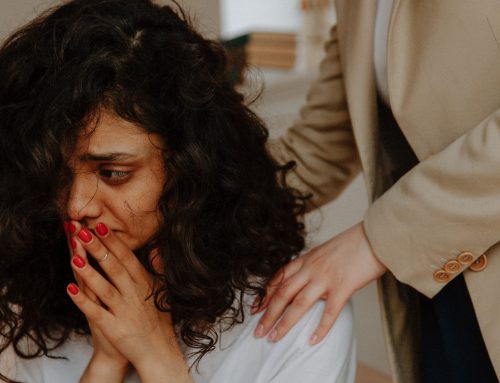What is Art Therapy?
Heidi Argyle, MA, RCAT, RP (Qualifying)
A noble question I am asked more often than I ever imagined.
In its most simple form, art therapy is a psychotherapy that uses the client’s creativity to connect, inform and change something they may experience as bothersome or harmful. But, if I have learned anything from writing about this question and answering it for many curious folks: there is no elevator pitch, there is no one answer and there is no way to fully understand it without doing it. So, I am going to take a noble journey and attempt to make it accessible for you in 1,000 words or less.
“Art therapy is a hybrid discipline based primarily in the field of art and psychology, drawing characteristics from each parent to evolve a unique new identity” (Vick, R.M. In Malchiodi, 2013).
In the beginning, art therapy was observed by notable psychoanalysts Sigmund Freud and C.G Jung (you know, that guy who wants us to trace all our ills back to our mothers? Okay, unfair but…) as a way to calm clients and get in touch with the unconscious mind.
After initial observations from those two, we have the North American emergence of the profession in psychoanalytically trained Margaret Naumberg and Edith Kramer. These two lovely ladies laid much of the groundwork for the profession as being unique from psychoanalysis, and allowed it to grow into what we know it is today.
Edith Kramer observed something very important to the practice of art therapy: when we allow the client to spontaneously create they will be able to access their unconscious, which allows them to understand their behaviours in a more purposeful way. This spontaneous art making is now known more broadly as “art as therapy”. It is knowing that art making feels good, making something feels great, and our brains get some much-needed rest. Art as therapy has many robust and meaningful applications throughout the discipline and with all ages.
Edith also coined the idea of the “third hand”. She noticed the therapists’ job was to be present and attuned to the clients needs throughout the sessions but interrupting the creative process to teach was problematic. Instead the therapist supports the clients creative process without intervening, to anticipate their needs based on what they are making and experiencing in the moment.
Margaret Naumberg observed that when therapy uses art, the client will engage differently as the images become symbolic communications of therapy. She coined the practice “Dynamically Oriented Art Therapy”, where she would use art to help the client explore what was happening, realizing that experience is often difficult to talk about. More broadly today “Art in therapy” is how we use established therapeutic approaches (i.e CBT) and engage art making to create meaning and change with the client instead of only using words.
Dr. Martin Fisher, a psychoanalyst, paved the path to establishing the profession in Canada. The school he founded, the Toronto Art Therapy Institute (TATI), is still open and training Art Therapists to this day. The school is still grounded in psychoanalysis for training, but encourages new Art Therapists to find a model that suits them best. For example, I trained at TATI but I practice from a humanistic perspective of meeting people where they are, in this moment.
Art Therapy has since grown in leaps and bounds to include broad treatments and styles. There are far more complex and interesting things about how this profession got started, such as Adrien Hill (artist, solider), and depending on where you are in the world the development will be very different.
Alright, groundwork laid.
I told ya, it wasn’t an easy answer.
Psychotherapy
Depending on who you talk to, art therapists will tell you they are first psychotherapists who use art as a formal treatment. While others will say they are artists, who understand the therapeutic virtue of art making and the discipline as a whole (a very official office pole says we’re artists first).
Recently, Ontario regulated the profession of psychotherapy (College of Registered Psychotherapists: CRPO) and art therapy is one of the sub-professions to be regulated within the college. This is great news for the public because we are now held accountable to a governing body to ensure we are trained, monitored and practicing safely.
So technically, I guess that means we are “Artist Psychotherapists”. Neat.
Arts Education
One very important distinction that must be made, is that art therapy is not the same as teaching art. Over time I’ve heard on several occasions: “Oh! The art lady is here for art lessons”, and very awkwardly I must correct said enthusiastic helper that no, I am not doing art lessons and that I’m here for art therapy (which I’m pretty sure does nothing, but I feel better about making the distinction).
Art therapy values the process by which someone creates over what they make. Arts education is focused on style, form and technique. The outcome, or the art product is the goal. Simply, art therapy is about the process over the product.
It is very important, especially for children, to call it what it is: “therapy”. There is no question that the client will learn something in therapy, but that’s not our goal. Art Therapy is a safe place for the client to feel heard and understood, so they may create something meaningful to them, and so they can share it with me without the fear of judgement. An art therapist will be present with the client through their creation and story telling, and we will help to observe things the client may not see. We do so with curiosity and wonder at the client’s experience in order to help bring about change for that person in a meaningful way.
Summary
Art therapy is a complex experience wherein the client is working on their inner-self towards a sense of wellbeing. The profession has a deep and complex history throughout the globe and we are still learning how to present ourselves in a world that values the elevator pitch. Art therapy practice, like most therapies, does not have one approach. It is as diverse and unique as those seeking it and those practicing it.
If you need to know more there is always an art therapist out there who will chat with you, or better yet give it a try for your own wellbeing.






